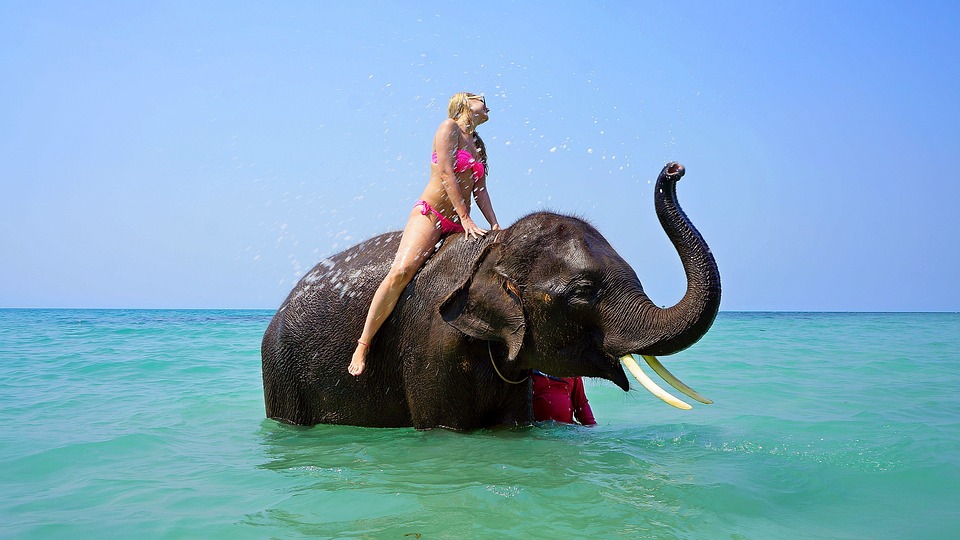The Ultimate Guide to Bikini Wax Guidelines
Are you considering getting a Bikini Wax but feeling a bit apprehensive or unsure about the process? Don’t worry, we’ve got you covered! In this comprehensive guide, we will walk you through everything you need to know about Bikini waxing. From preparation to aftercare, we’ll provide you with the essential guidelines to ensure a smooth and comfortable experience.
1. Preparing for Your Bikini Wax
Before heading to your waxing appointment, there are a few things you can do to make the process easier and less painful. Here are some essential tips to prepare for your Bikini Wax:
– Trim your hair: It’s recommended to trim your hair to about a quarter of an inch before your appointment. This length allows the Wax to grip the hair effectively, resulting in a cleaner and more efficient waxing process.
– Exfoliate the area: Gently exfoliating your Bikini area a day or two before your Wax can help remove dead skin cells and prevent ingrown hairs. However, avoid exfoliating on the day of your appointment, as it can make your skin more sensitive.
– Avoid caffeine and alcohol: Both caffeine and alcohol can make your skin more sensitive, so it’s best to avoid consuming them before your waxing session. Opt for hydrating drinks like water instead.
– Take a pain reliever: If you’re concerned about discomfort during the Wax, you can take an over-the-counter pain reliever like ibuprofen 30 minutes before your appointment. This can help reduce any potential pain or inflammation.
2. Choosing the Right Bikini Wax Style
When it comes to Bikini waxing, there are various styles to choose from. Here are some popular options:
– Standard Bikini Wax: This style removes the hair along the Bikini Line, ensuring a clean and neat appearance without going too far into the intimate areas.
– Full Bikini Wax: If you prefer a more thorough hair removal, a full Bikini Wax takes off more hair than a standard Bikini Wax. It includes the removal of hair from the Bikini Line, inner thighs, and the top of the pubic area.
– Brazilian Wax: The Brazilian Wax removes all hair from the Bikini area, including the front, back, and in-between. It leaves you completely hairless, providing a smooth and sleek look.
– Hollywood Wax: Similar to the Brazilian Wax, the Hollywood Wax removes all pubic hair. The only difference is that it also involves the removal of hair from the buttocks.
When choosing a style, consider your personal preferences, comfort level, and the amount of hair you want to remove.
3. During the Waxing Session
Once you arrive at your waxing appointment, your esthetician will guide you through the process. Here’s what you can expect during the waxing session:
– Privacy and comfort: Your esthetician will ensure your privacy and make you feel comfortable throughout the process. They will provide you with a towel or disposable underwear to wear during the Wax.
– Application of Wax: The esthetician will apply warm Wax to the desired area using a spatula or roller. They will then place a cloth strip on top of the Wax, pressing it firmly to adhere to the hair.
– Quick removal: After the Wax has cooled and adhered to the hair, your esthetician will swiftly remove the strip in the opposite direction of hair growth. This technique minimizes discomfort and ensures efficient hair removal.
– Repeat the process: Your esthetician will continue the process until all desired areas have been waxed. They may trim any longer hairs before applying Wax to ensure a smooth result.
4. Post-Waxing Care and Aftercare
To maintain the best results and keep your skin healthy after a Bikini Wax, follow these post-waxing care guidelines:
– Avoid hot baths and showers: For the first 24 hours after your Wax, avoid hot baths, showers, saunas, or steam rooms. Hot water can irritate your freshly waxed skin, potentially causing redness or sensitivity.
– Wear loose clothing: Opt for loose-fitting clothing made of breathable fabrics for the first few days after your Wax. Tight clothing can rub against your skin and cause irritation.
– Moisturize regularly: Keep your skin hydrated by applying a gentle, fragrance-free moisturizer daily. This can help prevent dryness and soothe any potential redness.
– Avoid sun exposure: Direct sun exposure can cause further irritation to your waxed skin. If you need to be out in the sun, apply sunscreen with a high SPF to protect the area.
– Say no to exfoliation: Avoid exfoliating the waxed area for at least 48 hours. Exfoliation can be too harsh on the sensitive skin and may lead to irritation or ingrown hairs.
5. Maintaining Regular Waxing Schedule
To enjoy the long-lasting benefits of Bikini waxing, it’s crucial to maintain a regular waxing schedule. The frequency of your waxing sessions will depend on the rate of your hair growth, but most individuals find that scheduling every four to six weeks is ideal.
Regular waxing helps to weaken the hair follicles, resulting in thinner and sparser regrowth over time. By sticking to a consistent schedule, you can achieve smoother and longer-lasting results with each waxing session.
In conclusion, Bikini waxing can provide you with a clean and confident feeling, and by following these guidelines, you can ensure a more comfortable and effective waxing experience. Remember to prepare adequately, choose the right style, take care of your skin afterward, and maintain a regular waxing schedule. So go ahead and embrace the benefits of Bikini waxing with confidence!
Top Inquiries About Bikini Wax Guidelines
What is a Bikini Wax and how does it work?
A Bikini Wax is a hair removal process that involves the removal of pubic hair in the Bikini area. It is typically done using warm Wax that is applied to the desired area and then removed with a cloth strip, pulling the hair out from the roots. This process helps in achieving a smooth and hair-free Bikini area.
The three most important things to know about Bikini waxing are:
1. Hair growth: It is important to have a certain length of hair growth, typically around 1/4th to 1/2 inch, for the Wax to effectively remove the hair from the roots.
2. Pain level: Bikini waxing can be uncomfortable or mildly painful, especially for first-time waxers. However, the pain usually subsides quickly and becomes less intense with subsequent waxing sessions.
3. Aftercare: Proper aftercare is crucial to prevent any irritation or infection. This includes avoiding hot baths or showers, excessive sweating, tight clothing, and applying soothing creams or lotions to calm the area.
What are the different types of Bikini waxes?
There are various types of Bikini waxes that cater to different preferences and styles. Here are three common types:
1. Standard Bikini Wax: This type focuses on removing hair outside the Bikini Line, ensuring a neat and clean appearance while leaving some hair intact.
2. French Bikini Wax: Also known as a partial Brazilian Wax, this style removes hair from the Bikini Line, labia, and the area in between. However, a small strip of hair is left on the front.
3. Brazilian Bikini Wax: This type removes all hair from the Bikini area, including the labia and buttocks. It leaves the area completely smooth and hair-free.
The three most important things to know about the different types of Bikini waxes are:
1. Coverage: Each type of Bikini Wax offers different levels of hair removal, allowing you to choose the style that suits your preferences and comfort level.
2. Maintenance: The level of maintenance required may vary depending on the type of Bikini Wax. A standard Bikini Wax requires less maintenance compared to a Brazilian Wax, which needs more frequent appointments to maintain the desired look.
3. Professional assistance: It is recommended to seek professional help for Bikini waxing, especially for more intricate styles like the French or Brazilian. Trained estheticians ensure proper technique and hygiene, reducing the risk of discomfort or complications.
How long does a Bikini Wax last?
The duration of a Bikini Wax varies from person to person, but it generally lasts between 3 to 6 weeks. However, the hair growth cycle and individual factors such as hormones and genetics can influence the rate of regrowth.
The three most important things to know about the duration of a Bikini Wax are:
1. Hair growth cycle: Hair grows in cycles, and not all hair is at the same stage at any given time. This means that some hair may start growing back sooner than others, leading to the need for touch-ups or maintenance appointments.
2. Maintenance: To prolong the results of a Bikini Wax, regular maintenance appointments are recommended. These appointments can help in removing any new hair growth and maintaining a smooth Bikini area.
3. Personal factors: Individual factors such as hormones, genetics, and metabolism can affect the rate of hair regrowth. Some people may experience faster regrowth, while others may have slower regrowth, resulting in longer-lasting results.
Can I get a Bikini Wax during my period?
It is generally safe to get a Bikini Wax during your period, but it is important to communicate this with your esthetician beforehand. They may have specific guidelines or preferences regarding waxing during menstruation.
The three most important things to know about getting a Bikini Wax during your period are:
1. Sensitivity: Some people may experience heightened sensitivity during their period, which can make the waxing process more uncomfortable. It is essential to communicate any discomfort to your esthetician so they can adjust their technique accordingly.
2. Hygiene: Estheticians are trained to maintain proper hygiene during waxing sessions, regardless of whether you are menstruating or not. They may use fresh waxing products and ensure clean and sanitized tools for your safety.
3. Personal comfort: It is ultimately up to your personal comfort level whether you choose to get a Bikini Wax during your period. If you feel uncomfortable or prefer to wait until after your period, it is completely acceptable to reschedule your appointment.
What are the potential risks or side effects of Bikini waxing?
While Bikini waxing is generally safe, there are some potential risks and side effects that you should be aware of. These may include:
1. Skin irritation: Some people may experience redness, swelling, or irritation in the waxed area. This is usually temporary and subsides within a few hours or days.
2. Ingrown hairs: Ingrown hairs can occur when the hair grows back into the skin instead of growing out. This can lead to bumps or inflammation. Regular exfoliation and proper aftercare can help minimize the risk of ingrown hairs.
3. Infection: If proper hygiene is not maintained during the waxing process or in the aftercare routine, there is a slight risk of infection. It is important to follow the aftercare instructions provided by your esthetician to minimize this risk.
The three most important things to know about the potential risks or side effects of Bikini waxing are:
1. Precautions: To minimize the risk of skin irritation or other side effects, it is important to follow the pre-waxing guidelines provided by your esthetician. These may include avoiding certain skincare products or medications that can make the skin more sensitive.
2. Aftercare: Proper aftercare is crucial in preventing potential side effects. This includes keeping the waxed area clean, avoiding excessive heat or friction, and using soothing creams or lotions as recommended.
3. Professional assistance: Getting a Bikini Wax from a trained and experienced esthetician reduces the risk of complications. They are knowledgeable about proper techniques, hygiene, and can provide guidance on aftercare, minimizing the chances of adverse effects.
Common Misconceptions About Bikini Wax Guidelines
When it comes to Bikini waxing, there are several misconceptions that can lead to confusion or inaccurate information. It is important to understand the correct guidelines for Bikini waxing to ensure a safe and successful experience. In this article, we will debunk some of the most common misconceptions surrounding Bikini Wax guidelines.
Misconception 1: Bikini waxing is extremely painful
One of the most common misconceptions about Bikini waxing is that it is an extremely painful procedure. While it is true that waxing can cause discomfort, especially for those who are new to the process, it is important to note that the pain varies from person to person. Factors such as pain tolerance, skin sensitivity, and the skill of the waxing professional can all impact the level of discomfort experienced during a Bikini Wax.
Misconception 2: Bikini waxing is only for women
Another false belief is that Bikini waxing is exclusively for women. However, this is not the case. Men also opt for Bikini waxing to remove unwanted hair from their Bikini area. The popularity of male Bikini waxing has grown in recent years, with many men seeking a clean and well-groomed appearance. It is important to note that the guidelines for Bikini waxing apply to both men and women, although the desired style and shape may differ.
Misconception 3: Hair should be long for a Bikini Wax
A common misconception is that hair must be long in order to get a Bikini Wax. However, this is not true. In fact, it is recommended to trim the hair in the Bikini area to a length of about 1/4 inch before getting a Wax. This ensures that the Wax adheres properly to the hair and can be removed efficiently. If the hair is too long, it can cause more pain during the waxing process and may result in a less precise outcome.
Misconception 4: Bikini waxing causes permanent hair removal
Many people believe that Bikini waxing leads to permanent hair removal. However, this is a common misconception. Bikini waxing only removes the hair from the root, and new hair will eventually grow back. The duration of hair regrowth varies from person to person, but on average, it takes about three to six weeks for the hair to grow back fully. Regular maintenance and consistent waxing sessions are necessary to keep the Bikini area hair-free.
Misconception 5: There is only one type of Bikini Wax
It is often assumed that there is only one type of Bikini Wax, but this is not true. In fact, there are different styles and types of Bikini waxes available, each with its own guidelines and recommended techniques. The most common types include the classic Bikini Wax, which removes hair from the sides and top of the Bikini area, and the Brazilian Wax, which removes almost all hair from the Bikini area, leaving only a small strip or triangle. It is important to communicate your desired style and preferences with the waxing professional to ensure you receive the appropriate type of Bikini Wax.
In conclusion, there are several misconceptions surrounding Bikini Wax guidelines. It is important to debunk these misconceptions and understand the correct guidelines in order to have a safe and successful Bikini waxing experience. Remember that pain levels vary from person to person, Bikini waxing is not limited to women, hair should be trimmed before waxing, Bikini waxing does not lead to permanent hair removal, and there are different types of Bikini waxes available. By understanding these facts, individuals can make informed decisions and achieve the desired results from their Bikini waxing sessions.


